September 21st, 2010 · 1 Comment
Museums in England and unlike any I’ve seen before. It’s absolutely incredible. I can’t believe how trusting the curators are. There will be an ancient Greek sculpture, for example- the original, mind you- on display with no barrier separating it from the museum-goers. There will simply be a sign nearby asking politely if the spectators please wouldn’t mind not touching it. At the Victoria and Albert, you can accidentally lean against some medieval sarcophagus without even realizing it.
Another amazing thing about the museums here is the wide variety of objects on display. I speak mostly of, again, the Victoria and Albert, where everything is wonderful yet nothing really seems to make sense. There are gigantic rooms filled with hundreds of objects, none of which really seem to fit into the same category. There is a Japanese teahouse in the medieval section, for example. In the fashion exhibit, hundreds of outfits were organized, almost nonsensically. At first, I thought they were chronological, and then I thought they were organized by the fashion capital they were designed in. Eventually I realized that both categorizing systems were incorporated into the design, but neither permeated the entire exhibit. The result was a very interesting yet scattered display.
The “Recent Acquisitions” room was my favorite. It was located off a hall that was filled with ancient Asian artifacts and next door to a room that contained miniature models of the V&A museum. The recent acquisitions apparently consisted of something like a ball of yarn, a strangely painted chair, and an ancient statue. They had absolutely nothing in common except for the fact that the museum had recently acquired them and did not yet know where to put them.
There were two large rooms- which were not available for viewing but were located underneath a walkway so we could see into them- that were filled with huge replicas of columns and gargantuan doors and enormous shrines. I could see no rhyme or reason to the organization of these rooms- they seemed more like storage areas than anything else- but they were beautiful and fantastic, nonetheless.
The organization of the rooms was so strange that it was rather difficult to find anything. This made it enjoyable in the sense that it made the museum visit seem almost like a treasure hunt; it made me look at things more carefully, to ensure I didn’t miss out on any exciting artifacts. I managed to find, courtesy of Amy, one of da Vinci’s note books tucked behind a wall, nearly hidden from sight in the Medieval and Renaissance section. The Hypnertotomachia Poliphili, a beautiful book from the 1400s, was practically stashed away in a drawer in the same area. In the Theatre section, I was able to see, amongst a vast collection of current movie posters and sketches of older plays, two patents for theatres from 1660 scattered throughout the less significant pieces.
Of course, not all museums in London are organized like the V&A. The British Museum and both the London Museum and the Docklands Museum, for example, are organized very logically. It is not hard, in these museums, to see why the curators arranged the exhibits the way they did.
But I am very curious as to why the V&A is organized as it is and, sadly, I do not have an answer. Perhaps there are just too many items from a broad variety of periods to be contained by conventional categorization. Or perhaps the curator just thought it would be an interesting display. My speculation will have to do for now, I suppose.
Tags: 2010 Jessica
September 20th, 2010 · No Comments
Throughout this last month I have been to so many museums I have lost track of the number. However, within this plethora of museums there have been two that impressed me so much that I remember all the exhibits I saw within them.
The first museum that put me into a state of awe was none other than the Cabinet War Rooms. I first should mention that I am a war history buff. I love to learn everything that led to conflict, during the conflicts, and the general aftermath. Therefore, hearing that there was a museum specifically dedicated to the Cabinet that endured one of world histories most massive conflicts; it had my name written all over it. Once in there I expected to see the duplications of the map rooms, the bed rooms, kitchens, etc. What I wasn’t expecting, however, was a whole floor section dedicated to the life and death of Winston Churchill. In the history courses I have taken in the past we have always blown past Churchill’s contribution to the war as the British Prime Minister.  (http://cwr.iwm.org.uk/) It was surprising to see his trajectory from child to leader of a country in a time of chaos, and how he came out on top. By far Winston Churchill has some of the best quotes in history. Some of which are:
(http://cwr.iwm.org.uk/) It was surprising to see his trajectory from child to leader of a country in a time of chaos, and how he came out on top. By far Winston Churchill has some of the best quotes in history. Some of which are:
“I always believed in staying in the pub until closing time”
“I am prepared to meet my Maker. Whether my Maker is prepared for the great ordeal to meet me is another matter.”
And my favorite….
“I have no more ambition… but to ease world tension, and pave the way for peace and freedom.”
Although all of this was completely amazing and I have never seen anything like this before it had Britain’s imperialism written all over it. They just needed to add at the end, “For the Glory of the Empire.” I think it is healthy for a government to show and flaunt its successes especially if it’s as great as surviving WWII.

The second museum that was just as amazing was the Victoria & Albert museum. Based upon its name I knew nothing of what to expect. Upon entering this enormous structure they call one museum I was taken aback by the amount of valuable items of history in one structure. Just to give you a little sense of what I saw I will write a small list of items. I saw sculptures and door fronts from the Medici family, paintings from the Renaissance era, gorgeous structures from the ancient Greek era, rugs from the Persian Empire, the Grace Kelly: Style icon exhibit, and lastly but certainly not least doodle notebooks from Leonardo Da Vinci himself. There was so much more that I didn’t explore because my legs were tired. The Victoria & Albert could best be described as a building of world treasures.
No doubt, England did not get these invaluable items through benevolent methods but rather through force. The fact that it is in one building open to public viewing free of charge almost negates the method it was gathered in. Again, this museum showed the British Monarchy’s greatness because it was able to conquer the greatness of all previous world Empires and display them in London.
The museums of London pay tribute to the greatness of the British Empire, what once was, and what the government hopes for it to be again.

Tags: 2010 Jamie

“Eve” by Thomas Brock, 1899
Seeing the Victoria and Albert Museum is a must. And you most definitely should enter the museum via the Tube entrance. Prior to my visit, I naïvely believed the Victoria and Albert Museum would display art from Queen Victoria’s reign to illustrate the period—I found myself mistaken. Upon entering V&A from the underground tunnel, I immediately stepped foot into a series of small, dark rooms off to the right. The rooms modestly displayed furniture and tapestries from Europe dating from the seventeenth to nineteenth century. I then wandered into the main museum hallway above ground and explored the diverse assortment of sculptures extending down a long hallway. Taken aback, I quickly realized the V&A actually displayed a much broader range of art. By the end of my visit, I found that was a huge understatement. The Victoria and Albert Museum is enormous and houses a collection of almost every type of visual art.
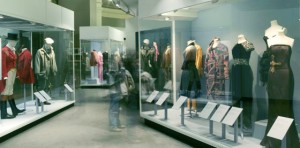
Fashion Exhibit
The museum map became somewhat useless and rather bothersome as I wandered through the labyrinth of art. Branching off of the main sculpture room—which included work from a favorite sculptor of mine, Rodin—were displays of art from China, the Islamic Middle East, Japan, Korea, South Asia, and South-East Asia. Another room I thoroughly enjoyed was a room presenting fashions from Italy, the United States, Japan, England, and France. The clothing dated from the eighteenth century through today. I only explored parts of the first floor and I still had five more levels!
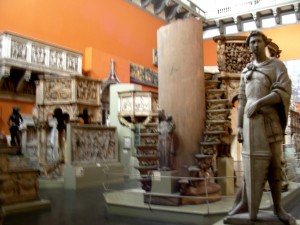
Plaster-casted Sculpture Exhibit (personal photo)
Throughout the remainder of my museum tour, I discovered collections of photography, mini architecture models, prints, drawings, paintings, tapestries, sacred silver and gold, and stained glass. There were also two massive rooms of plaster-casted architecture and sculptures dating from the eighteenth century, when plaster-casting famous works was popular for museum displays. Numerous rooms displayed eclectic exhibits of Medieval and Renaissance European art from the fourth to seventeenth century. When I finally stumbled into a dark hidden room of priceless jewelry dating back from 1500 BC, I was irrevocably astounded. I was lost in the Victoria and Albert museum but when discovering all these sorts of extraordinary pieces of art, who didn’t want to be?

Stained-glass Exhibit (personal photo)
On the whole, the museum’s collection was incredible (if that’s not obvious already). I was completely taken aback by the wide array of art displayed, as well as the priceless items included—countless pieces of silver and jewelry, as well as Leonardo da Vinci’s notebooks and Raphael’s paintings (coming soon). However, the organization of the museum is a contentious topic. The pieces of art come from all over the globe and date back to 1500 BC. Also, obviously, the museum includes almost every type of art. To mitigate this challenge of organizing the art, the museum’s ironically set-up like a maze. The different rooms intertwine and lead you through every floor, and each room is included in the art display. For example, doorways to Renaissance Europe boast beautiful marble columns, tiled floors mimic mosaics on display, monolithic architectural structures make Italian plaster-casted sculptures seem authentic, and aged brick walls and cobblestone floors bring life to the medieval ironwork.

Large-scale Medieval and Renaissance Architecture (personal photo)
From what I could gather, it seems as though the Victoria and Albert Museum is a massive collection of treasures donated by organizations and wealthy individuals. For one, the galleries of donated art pieces ostentatiously display the donor’s name on the wall. Overall, the V&A Museum is a display of wealth—both of England’s monetary wealth and of its wealth of knowledge in the arts. The museum has put on display priceless pieces of art from around the world. The English are subtly, but really quite clearly, boasting. Typical.

One Exhibit’s Entranceway (personal photo)
Tags: 2010 Mary · Museums
September 8th, 2009 · 1 Comment

Jack Sturges (American author and photographer) once said that “The world is shrinking as we see more and more of it in the media, and the more we see of the world, the smaller we are, the more aware we are of how insignificant any one of us is.” This is how I felt today at The Sir John Soane’s Museum, as if the world had shrunk into one house (a work of art) and I was there, insignificant.
I was surprised to arrive at the museum and realize that it used to be someone’s home, self constructed and designed. While waiting in line to enter I attempted to make friends with the doorman, and so I asked him to tell me a little bit about Sir John, who he was and what the museum was about. He responded by saying: “Well why are you here then? Why did you come to a museum that you knew nothing of, you should have done your research.” Him and I were off to a bad start. I expected him to enthusiastically respond, after all, I knew the basics and thought he could have shared a few things about the museum I didn’t know. I forgave him for making me feel stupid at that moment, but I guess he had a good point, I should have done my research. He did tell me about the importance of sunlight to Sir John and how he designed the house to have as much sunlight as possible entering in every room; I was now on the look out for the infamous windows.
The house was lit up with sunlight. Today was a sunny day and I was able to appreciate the house’s illuminates passageways and sculptures in the various rooms. His collection of artwork, as well as sculptures and treasures was breath taking. For someone to design such a marvelous home, and to spend their life collecting such amazing works is truly admirable. He had a piece of the world in different corners of his home and in any given room/space one can experience Egypt, Rome, Britain and even the transgression of time through paintings or within the pages of Soane’s 6,857 books.
In one of the rooms filled with paintings, one of the museum’s curators opened up the wall-sized doors where suddenly more paintings became visible to our eyes. There, were the paintings of buildings Sir John had designed, for he was a prominent architect, including sketches of the house itself and a statue of a women (whose name I cannot recall). Hidden treasures.
To be inspired to build such a home, as well as to collect such magnificent and priceless pieces of art is the kind of inspiration I seek. The one that goes beyond boundaries to further personal growth while engaging the outside world. Although Sir John Soane lived from 1753 to 1837 his life, his collections and his home will live on as an example to the rest of us of a rich life. So that one day we can rest knowing that we have completed our lives significantly.
Tags: Flow
September 1st, 2009 · 1 Comment
Since the first day that we arrived at the Arran Hotel, I have been grappling with this concept of time and the need for humans to categorize everything. Humans have become completely reliant on categories, words, titles, definitions, labels etc. It is has been completely imbedded in us to put a title on everything, whether it is clothes, race, gender, sexuality, measurements, concepts, and what I realized today, time. Even time is broken down into different categories, years, months, weeks, days, hours, minutes, seconds and so on and so forth. As I tell you of my endeavors today, and do my best to inform you of my epiphany and how to dissect the concept of time, try to imagine a world where time did not exist, instead think about just being. If that even makes sense.
Today I traveled not only the world, but back in time. I began my day in London as I walked with friends to grab brunch before beginning my adventures. We decided that Subway would be a satisfying and well balanced meal before leaving the country and our present day. We ate a quick bunch because we were eager to see what the rest of the world had to offer. Once our bellies were filled with double turkey and cheese (literally we all had the same thing) we headed out.
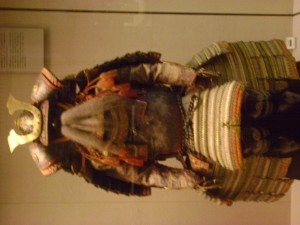
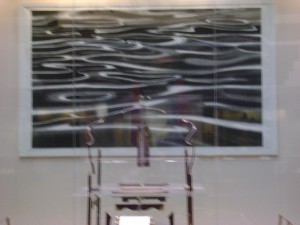 Our machine that would transcend both countries and time was guarded by a huge gate. The name of it was the British Museum and as we entered people of all different ethnicities, and classes were leaving and coming from their own journey’s. The vast time capsule greeted us and as we traveled up the stairs we had already decided our first destination would be Egypt. We passed through time and space at the speed of well, us because the stairs were quite numerous, but once we arrived we were greeted by Egyptian royalty, and mummies. The exhibit was gorgeous and the mummies, plenty, but as I stared at the mummies, I could not get the concept of time out of my head. Dancing in my mind was the fact that at one point these mummies were alive, and now thousands of years later here I am looking at their preserved corpses. I soon was able to focus on the beautiful pieces in front me and tried to push the ideas in my head aside for future analysis. We saw many other exhibits, including one on Japan, and another on North America. Each exhibit shared both the culture and the history of its people. Thinking of the past present and future of the many different cultures of the world quickly brought me back to this concept of time, but for the sake of time, I decided to visit another museum.
Our machine that would transcend both countries and time was guarded by a huge gate. The name of it was the British Museum and as we entered people of all different ethnicities, and classes were leaving and coming from their own journey’s. The vast time capsule greeted us and as we traveled up the stairs we had already decided our first destination would be Egypt. We passed through time and space at the speed of well, us because the stairs were quite numerous, but once we arrived we were greeted by Egyptian royalty, and mummies. The exhibit was gorgeous and the mummies, plenty, but as I stared at the mummies, I could not get the concept of time out of my head. Dancing in my mind was the fact that at one point these mummies were alive, and now thousands of years later here I am looking at their preserved corpses. I soon was able to focus on the beautiful pieces in front me and tried to push the ideas in my head aside for future analysis. We saw many other exhibits, including one on Japan, and another on North America. Each exhibit shared both the culture and the history of its people. Thinking of the past present and future of the many different cultures of the world quickly brought me back to this concept of time, but for the sake of time, I decided to visit another museum.
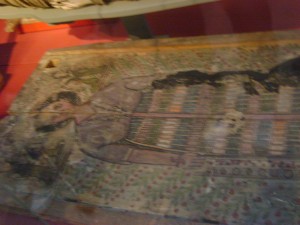

We headed back to the hotel to pick up a few more “time travelers”. Once we everyone was ready we headed to the tube station. As a topic of conversation one of the students asked what was everyone going to do there next blog about. I shared with them that I was trying to center mine about the concept of time. Then one student shared their idea that “time is a social construction.” Now being an American Studies major I am all too familiar with the concept of social constructions, but for some reason the fact that time was a part of that list was something I never connected with. I continued the rest of our journey to the Victoria and Albert museum trying to dissect this sudden epiphany.
Now of all the museums I have visited since arriving in London the Victoria and Albert museum is by far the most amazing in my opinion. Once departing off the train the group and I walked down a vast tube like path and at the end was an entrance straight into the sculptures section. Immediately I was blown away by the detail that each of the pieces consisted of. Each sculpture portrayed a message or told a story of some sort which struck me, seeing as how before they were created they were nothing but stone. I next made my way through decades of fashion, paintings, and the history of numerous cultures, and with each one I began to appreciate not only their art but their history, their story spanning time for thousands of years.
I learned today how reliant mankind is on time, and the fact that time doesn’t really exist. Before men and women even came up with the concept of time, things just existed, lived and died, were created and destroyed. There was no dependency on time, but now it has been imbedded in our culture as something normal. Thinking about it I love the whole idea of time, but I do find flaws in it as well. The fact that life has become a series of planned and scheduled events disgusts me, the fact that we count the years as we all age, and how we mark the days as they go by. Time is such an unnatural concept, something that no other species on this planet is aware of. I appreciate time and the moments I share with people but when discussing the true reason for time and its creation, I am finding that I am displeased with this invention of man.
Tags: Anthony · Uncategorized

 (
(









 Our machine that would transcend both countries and time was guarded by a huge gate. The name of it was the British Museum and as we entered people of all different ethnicities, and classes were leaving and coming from their own journey’s. The vast time capsule greeted us and as we traveled up the stairs we had already decided our first destination would be Egypt. We passed through time and space at the speed of well, us because the stairs were quite numerous, but once we arrived we were greeted by Egyptian royalty, and mummies. The exhibit was gorgeous and the mummies, plenty, but as I stared at the mummies, I could not get the concept of time out of my head. Dancing in my mind was the fact that at one point these mummies were alive, and now thousands of years later here I am looking at their preserved corpses. I soon was able to focus on the beautiful pieces in front me and tried to push the ideas in my head aside for future analysis. We saw many other exhibits, including one on Japan, and another on North America. Each exhibit shared both the culture and the history of its people. Thinking of the past present and future of the many different cultures of the world quickly brought me back to this concept of time, but for the sake of time, I decided to visit another museum.
Our machine that would transcend both countries and time was guarded by a huge gate. The name of it was the British Museum and as we entered people of all different ethnicities, and classes were leaving and coming from their own journey’s. The vast time capsule greeted us and as we traveled up the stairs we had already decided our first destination would be Egypt. We passed through time and space at the speed of well, us because the stairs were quite numerous, but once we arrived we were greeted by Egyptian royalty, and mummies. The exhibit was gorgeous and the mummies, plenty, but as I stared at the mummies, I could not get the concept of time out of my head. Dancing in my mind was the fact that at one point these mummies were alive, and now thousands of years later here I am looking at their preserved corpses. I soon was able to focus on the beautiful pieces in front me and tried to push the ideas in my head aside for future analysis. We saw many other exhibits, including one on Japan, and another on North America. Each exhibit shared both the culture and the history of its people. Thinking of the past present and future of the many different cultures of the world quickly brought me back to this concept of time, but for the sake of time, I decided to visit another museum.
